“I hate flying,” the man seated next to me said. I instantly started to consider the little boy on a previous flight, who proudly told the pilot the flight was fun. Flyers become jaded at a certain point. There are so many factors working against enjoying flying, I suppose. I sat back as the plane took a bumpy landing, just before rejoining the ground in Tulsa.
I began my trip out to North Carolina, where I am now, with a plane ride. It has become so routine. We board a flight. We hope it travels safely. And then, we land. What I don’t always consider is just how impressive it is, how remarkable it is, that we can even fly. In an unsuspecting stretch of land, the impossible became possible.
Just over 100 years ago, the Wright Brothers successfully manned the first powered flight to take off from the ground. A hundred years can seem like a long time, but not for me in this sense. The Wright Brothers National Memorial stands in Kill Devils Hills on North Carolina’s Outer Banks. Basically a long sandbar, the Outer Banks constantly change with every storm. As you would imagine, the wind is a key player in the area’s life, an element that drew the Wright Brothers out of Ohio and to this once remote and isolated strip of land.
For three years Wilbur and Orville Wright traveled to and from Dayton, Ohio and the Outer Banks. The brothers were disappointed in the development of aeronautics by some of the greatest minds at the time. They were looking for progress. The Wright Brothers would test their gliders on Kill Devil Hill, the tallest sand dune on the Outer Banks. And on December 17, 1903, Orville Wright took the controls, manning the first heavier than air machine to leave the ground by its own power, in other words, the first completely successful manned flight in the world.
The Wright Brothers National Memorial covers that area, the space of land where travel as we know it would change forever. You can see the first flight boulder and the first flight markers. A granite boulder marks the very spot where the first plane left its relationship with the ground. Stone markers line up behind it, staggered at various distances, marking the first four flights. The first flight flew 12 seconds at 120 feet. By the time of the fourth flight, the Wright Brothers would stay in the air a little longer and up a little higher, traveling for 59 seconds and at 850 feet.
On top of Kill Devil Hill, a giant 60-foot monument stands for what those little flights achieved. You can climb up the hill for what seems strenuous in the dead heat today. Once I reach the top, I recognize this spot, so strangely. Two men devoted themselves to flying, to traveling beyond the ground or water. And atop this hill, Kill Devil Hill, I can imagine what the first aviator saw, blocking out the development in between. With that engulfing heat, I turn as red as a tomato, thinking what I wouldn’t give for a plane to bring me down from here.
Up here, I think about that man, the one who so gruffly told me how much he hated to fly. I don’t think he had a phobia or a fear of flying. He just hated it. I can only wonder how ungrateful the Wright Brothers must see everyday flyers now. Businessmen and women board planes daily, jetting them off to meetings and then back home again, all in a day’s work. Families go on vacations in enough time to get back for school, usually thanks to a quick flight down to Orlando. And travelers like myself, can get up and go to a point on a map with the greatest of ease. I notice a bronzed plaque to Orville and Wilbur, with faces of the two first real pilots. Atop their glazed-over looks is the statement, “They taught us to fly.” I apologize, Wright Brothers for my ingratitude.
Have you ever been to the Wright Brothers Memorial on the Outer Banks? Does flying still impress you today?

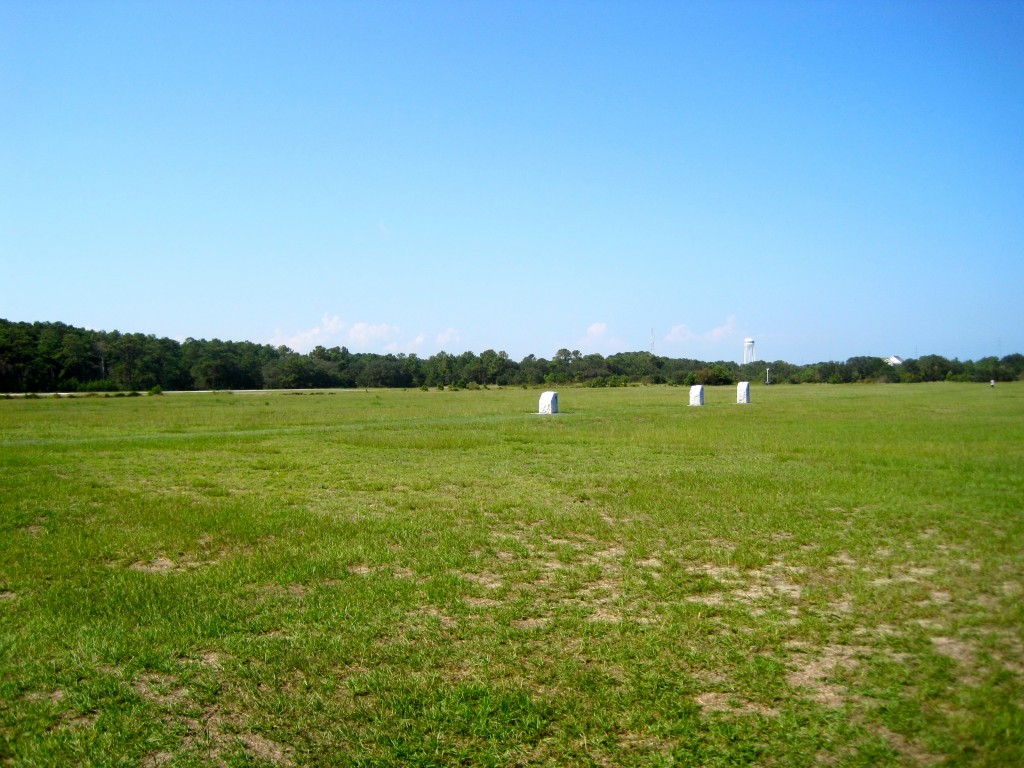
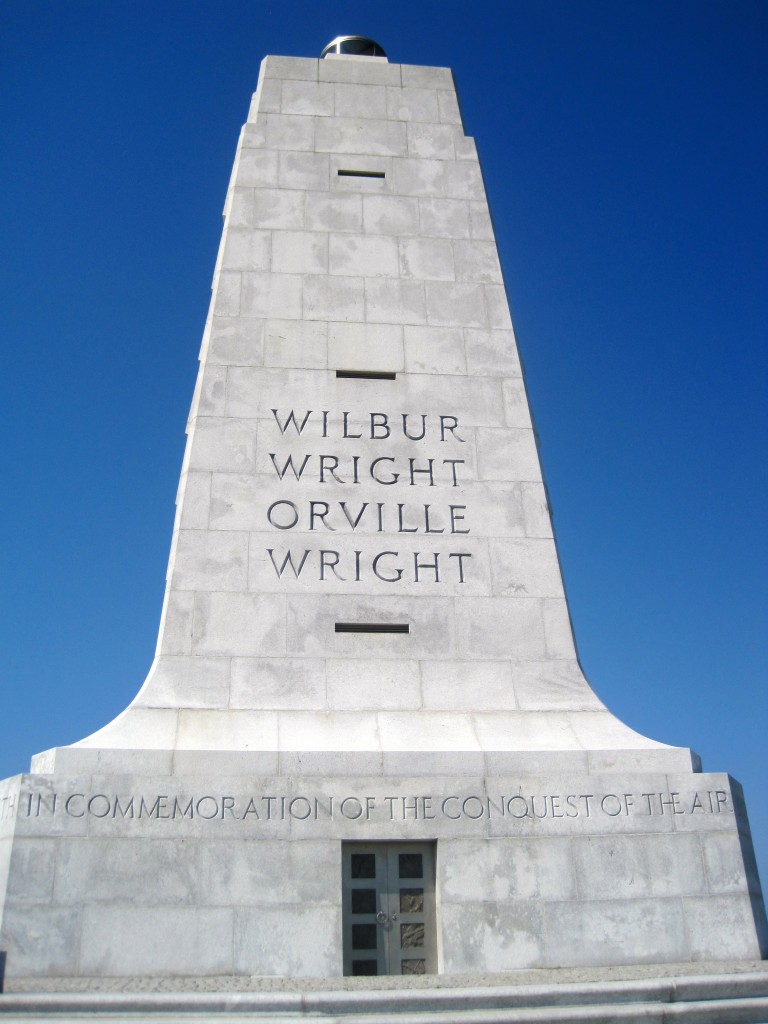
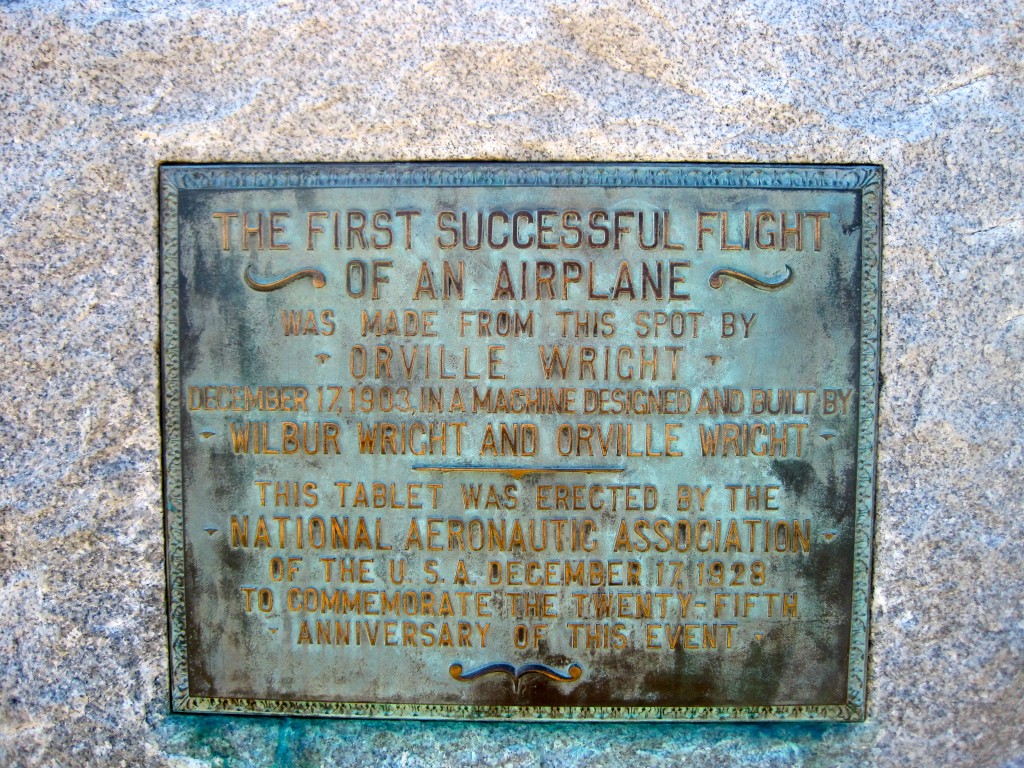
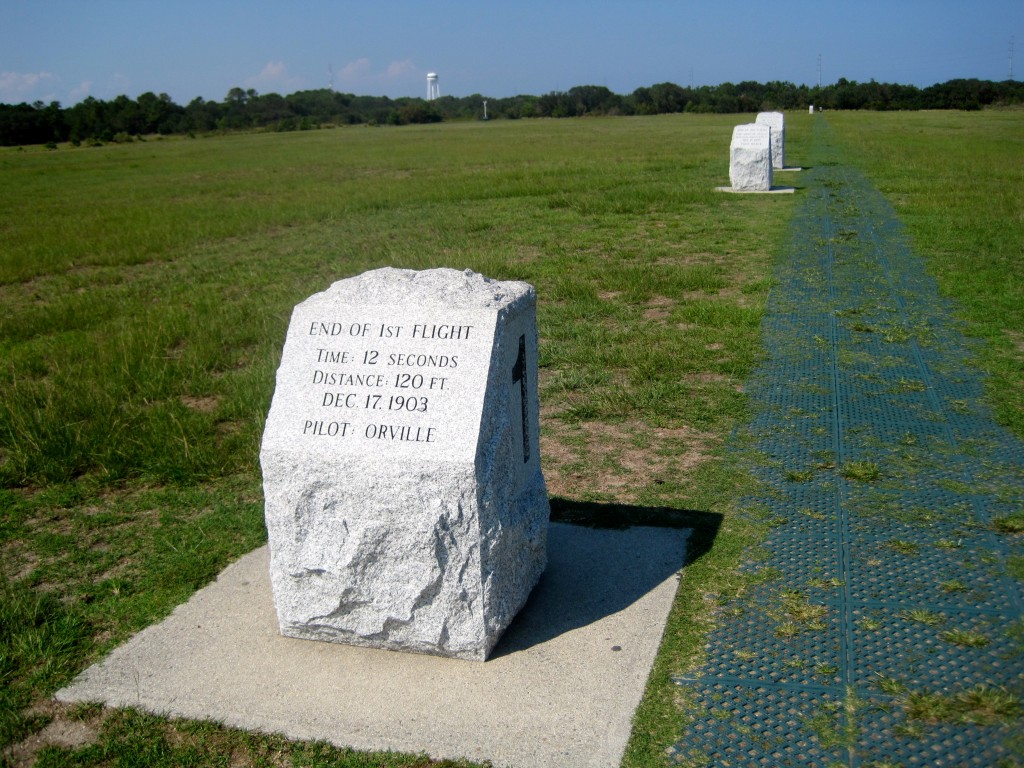
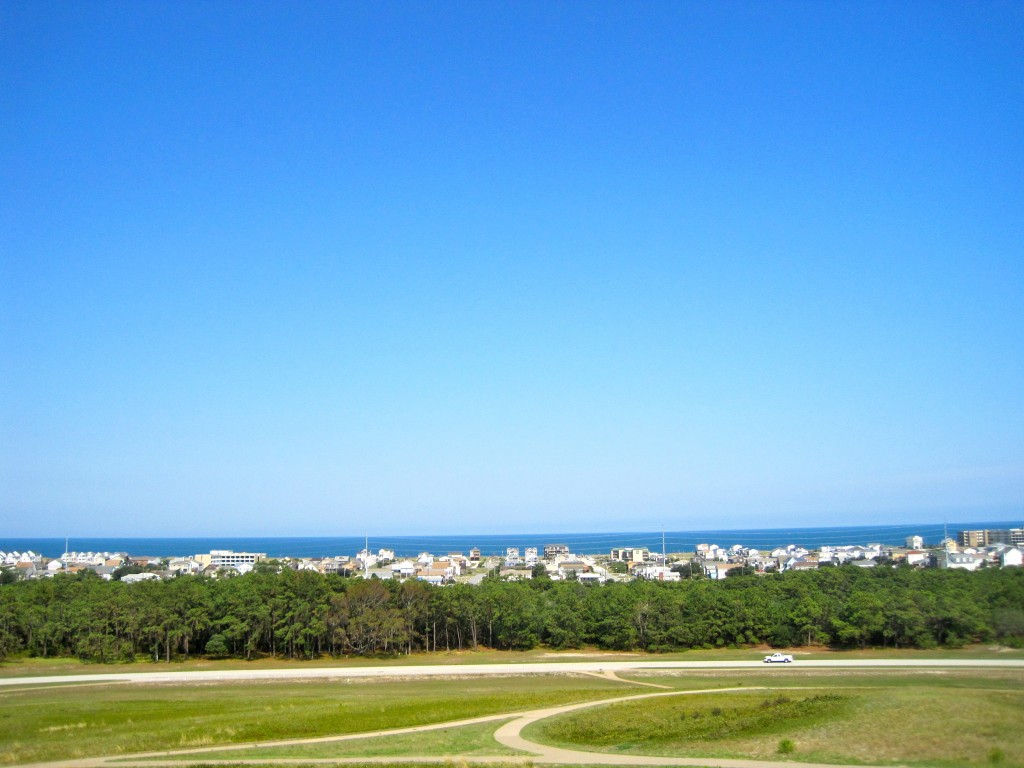
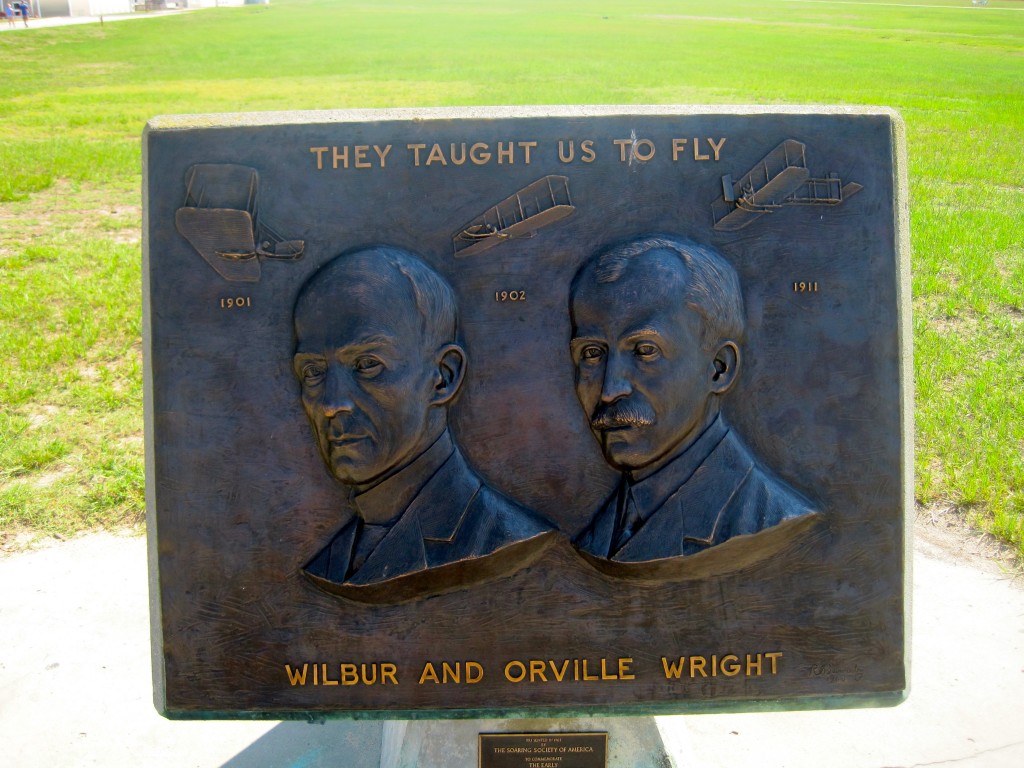
Great post, i love it.
I’m not an aviation buff but I do always always go through a movie-monologue in my head whenever i take off in very big planes. It’s just amazing how a large heavy chunk of metal can get off the ground and stay there.
But then I also turn paranoid when it’s a prop plane landing on a very short runway. *shrugs*
I’m afraid I’m one of those people who hates flying. It’s not that I don’t appreciate it, I am just uneasy about it and have seen far too many disaster movies! You’re right though, it’s easy to forget the great lengths and innovation that it took to get flying off the ground. I found this post very interesting, thanks 🙂